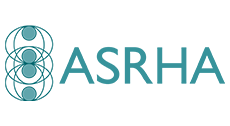Donovanosis
Overview
- Donovanosis is a rare cause of genital ulceration but should be considered in patients returning from areas where the disease may be endemic e.g. PNG, Southern Africa, India and parts of South America.
- Primarily sexually transmissible but may be transmitted vertically and by casual contact.
- Incident cases were found as recently as mid 2000s in northern and tropical Australia among Aboriginal and Torres Strait Islander people, but it is now very rare in these areas.
- In non-healing genital lesions, carcinoma needs to be considered.
- Klebsiella granulomatis
|
Symptoms |
|
|
|
|
Complications |
|
|
|
See STI Atlas for images.
|
Site/Specimen |
Test |
Consideration |
|
Dry swab or punch biopsy of lesions |
NAAT |
Highly sensitive and specific but only available in Pathwest laboratories in WA and the Molecular Diagnostics Unit at Royal Brisbane and Women’s Hospital. Discuss with your laboratory before sending specimen |
|
Punch biopsy of lesion |
Histology |
Low-to-moderate sensitivity but highly specific; requires experienced histopathologist as classic Donovan bodies may be sparse. Biopsy if any concern about malignant change. |
NAAT – Nucleic acid amplification test
Specimen collection guidance
Clinician collected | Self-collection
Investigations: Extra-genital disease should be considered in patients with current genital infection and in patients with a past history of donovanosis who present with unusual symptoms.
|
Principal treatment option |
||
|
Situation |
Recommended |
Alternative |
|
Anogenital lesions |
Azithromycin 500 mg PO, daily for 7 days OR Azithromycin 1 g PO, once weekly for at least 4 weeks, until complete resolution of lesions |
Doxycycline 100 mg PO, BD for a minimum of 4 weeks, until complete resolution of lesions |
BD: twice daily
PO: orally
Treatment advice
- Azithromycin is highly effective and well tolerated.
- Seek specialist advice before treating this rare condition.
- Adherence to treatment is essential to ensure cure, consider directly-observed therapy.
Other immediate management
- Advise no sexual contact for 7 days after treatment is commenced, or until the course is completed and symptoms resolved, whichever is later.
- Advise no sex with partners from the last 6 months until the partners have been reviewed and treated if necessary.
- Contact tracing.
- Provide patient with factsheet.
- Notify the state or territory health department.
Special considerations
- Neonates born to a mother with untreated donovanosis at time of delivery should be followed closely for the development of lesions.
- Patients may require hospital admission if adherence to treatment is poor or disseminated disease present.
- Many guidelines recommend treating with azithromycin until lesions have completely healed but there is no evidence that longer treatment is beneficial. Non-azithromycin regimens should be continued until complete resolution of lesions.
|
Situation |
Recommended |
|
Complicated or disseminated infection |
May require prolonged treatment |
|
Azithromycin is the recommended treatment |
|
|
Allergy to principal treatment choice |
See alternative treatment option above. |
Contact tracing of sexual partners in last 6 months is recommended but yield is low.
See Australasian Contact Tracing Manual for more information.
Review in 1 week provides an opportunity to:
- Confirm patient adherence with treatment and assess for symptom resolution
- Confirm contact tracing has been undertaken or offer more contact tracing support
- Educate about condom use, contraception, HIV PrEP/PEP, safe injecting practices, consent, CST and vaccinations for HAV, HBV and HPV as indicated.
Test of cure
- Relapse and re-infection can occur and patients should be reviewed at completion of treatment course and at 3 months
- Recurrence of lesions may represent development of skin cancer in previous lesions and requires biopsy.
Retesting
Not required but provides the opportunity to retest, post the window period, for other STIs, if not undertaken at first presentation.


